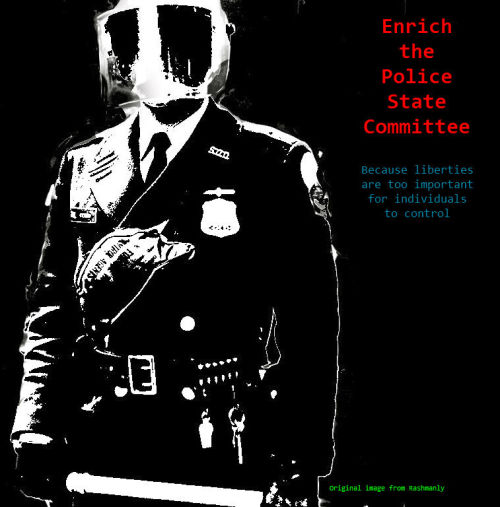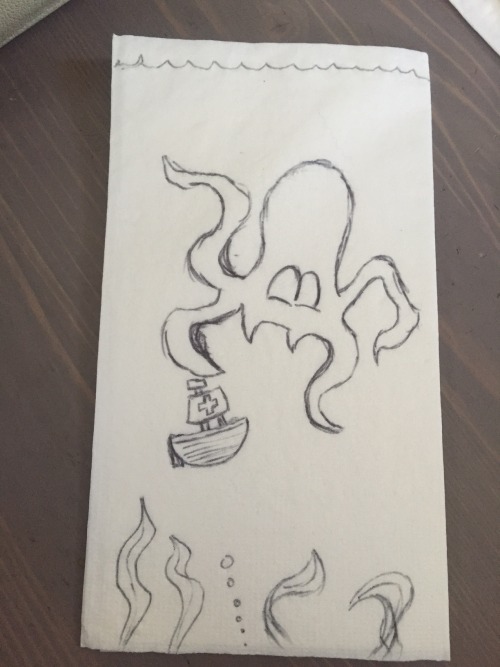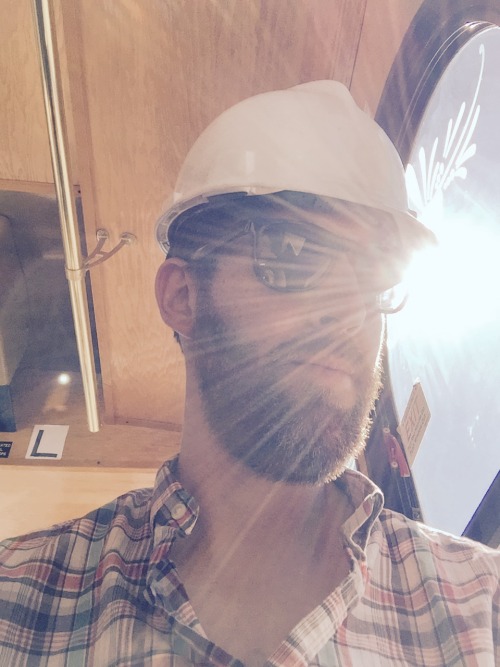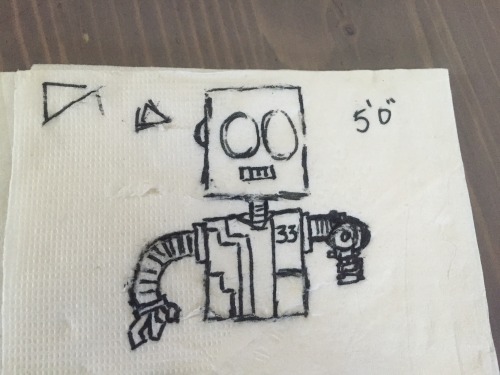-
Original Video - http://digg.com/video/adam-savage-alton-brown-comic-con-matrixStory FlowA...
-
Adam Savage & Alton Brown Comic-Con Walkthrough
Original Video - http://digg.com/video/adam-savage-alton-brown-comic-con-matrixStory FlowA... -
Mondays
No one complained about Mondayswhen we roamed the plains.There were no groggy hellos or red eyed... -
Mondays
No one complained about Mondayswhen we roamed the plains.There were no groggy hellos or red eyed... -
Magical Light – Original Assignment…
Magical Light - Original Assignment - http://tdc.ds106.us/tdc1283/ -
-
Reflection 5
More posting from the road! I really enjoyed this week, particularly the first #dailycreate... -
Reflection 5
More posting from the road! I really enjoyed this week, particularly the first #dailycreate... -
Original Assignment…
Original Assignment - http://assignments.ds106.us/assignments/create-your-own-superpac/SuperPAC Name Generator - http://project.wnyc.org/superpac-name-generator/Original Art - http://rashmanly.com/2012/09/28/rise-of-the-police-state/ -
Original Assignment…

Original Assignment - http://assignments.ds106.us/assignments/create-your-own-superpac/
SuperPAC Name Generator - http://project.wnyc.org/superpac-name-generator/
Original Art - http://rashmanly.com/2012/09/28/rise-of-the-police-state/
-
L&K Chapter 5
Blogging as a medium and contentAn interesting lens into blogging is to take the reader’s... -
Digital Critique 5 – “Grand Zero”
My first media critique! Even though digg.com has lost a lot of credibility in the past few years,... -
Write a “tanka” a Japanese death haiku
I thought my life dew and fog, a lantern with which to light the moon, a dragonfly’s dream of... -
Assignment-http://tdc.ds106.us/tdc1271/
Assignment-http://tdc.ds106.us/tdc1271/ -
Week 4 Reflection
Tough travel week for me, but also an opportunity to find some alternate inspiration for the... -
L&K Chapter 4
Still facing the wall-of-text barrier from L&K, but found the following subdivisions helpful:“1.... -
Digital Critique 4 – A World Without Work
Article here - http://www.theatlantic.com/magazine/archive/2015/07/world-without-work/395294/#disqus_thread
I’ll be using Jason Ohler’s ideas on how to construct a rubric for a digital critique.
Story flow
This was a great example of a story that did make you work to understand it, but was founded on ideas so accessible and engaging that it was easy to follow through it’s conceptual and hypothetical twists and turns. This article should be required reading because it asks questions that don’t just concern the history of work (with a focus on America), but also the present atmosphere surrounding work and work/life balance in America as well as permutations of how the future of a “post-work society could look.
Craftsmanship
Concision is the story’s only weakness. But its intentions are to take on a radical paradigm shift so it’s lack of brevity can be forgiven. It was certainly crafted with care. A personal and professional search for answers about where exactly personal and professional meet, intertwine, and subsume each other.
The story is very much based around a problem solving theme. I think the most illuminating aspect is that most readers would not be able to name what the “problem” is. Not because of the technical or esoteric nature, but because it’s something that is so accepted as a part of social/cultural expectations that it’s hard to identify it as possibly also being an aberration.
The pictures included in the article help lighten this type of heavy atmosphere. Each depicts a museum of the future where the artifacts of modern work are displayed. They are humorous and profound at the same time and they help lighten the absurdity of the article.
Truth in Absurdity
Absurdity is incredibly important here, as it’s also the topic I’ve chosen as a lens to explore and the reader has to pause and reflect on the absurdity of both “how we got here” as well as “where do we go?”
-
4 places I wanted to visit, and did last week!Clockwise from top…

4 places I wanted to visit, and did last week!
Clockwise from top left: Devil’s Tower, WY; Deadwood, SD; Mt. Rushmore, SD; the Badlands
Original Assignment Info - http://assignments.ds106.us/assignments/what-are-you-missing-nearby/
-
Draw a bad photo. Why is the ship underwater? Only the octopus…

Draw a bad photo. Why is the ship underwater? Only the octopus knows…
Original Assignment Info - http://tdc.ds106.us/tdc1269/
-
-
Week 3 Reflection
I had a new goal this week. Post everyday. It went…ok
Monday - Found a great #dailycreate about using 10 neologisms to write a story. Had a great time doing it. Happy with the results. 1 for 1.
Tuesday - Read an accessible, extremely interesting hypothesis as to why writers are some of the worst procrastinators. Write my digital storytelling critique on it. The irony is lost on me… 2 for 2.
Wednesday - Moments of doubt: “I’ve done so well! If anything, I’ve bought myself some extra time! Lots to do at work…what could missing one day hurt?” 2 for 3.
Thursday - Ok, catch up day. Blindsided by new deadlines and projects. I’m trying to free myself up for vacation next week - sending endless emails to people who have already left for summer vacation. Out-of-office responses drown me in a sea of polite inaccessibility. 2 for 4.
It goes on like this. Although I didn’t meet my goal, it was still a step in the right direction and I really enjoyed committing to one work each day. It made it feel much more manageable. I also was able to identify resources for next week, so that’s an advantage as well. So, because I set clear parameters up for success and experienced success as a result, but failed to stick to the parameters…I give myself a 7/10.
-
Silence is…
Assignment: Write about what silence is. More info here: http://tdc.ds106.us/tdc1265/
Silence is..(a poem)
For some, silence is found in nature
among the birds and the grass and the trees
but for us, son, silence is only
in footsteps when somebody leaves
-
L&K Chapter 3
There was a time when I praised L&K as being accessible, but now that we’re continuing to delve into the nuance of literacies and even what “new” means, I’ve had to take more time to deconstruct the text, and I don’t know if L&K is meeting me halfway. Chapter 3 has some fascinating material, but the format of the content is horrible: walls of text, no charts, no graphs, no nested hierarchy of concepts and lists. I agree with L&K that “It is no longer scarcity that determines value, it is dispersion (paraphrasing),” but if dispersion is so important then isn’t this chapter a good example of unstrategic dispersion?
To supplement Chapter 3, I found this brief presentation from Lankshear presented for a James Cook University and McGill University symposium. Instead of walls of text, Lankshear sorts the comparative mindsets for “new ethos” into two groups - “physical-industrial” mindset and “cyberspatial-postindustrial”
Although he lists a number of criteria that help delineate the two, here are the ones I found most illuminating:
The world basically operates on physical/material and industrial principles and logics. The world is “centered” and hierarchical.
The individual person is the unit of production, competence, intelligence
vs
The world increasingly operates on nonmaterial (e.g., cyberspatial) and postindustrial principles and logics. The world is “decentered” and “flat.”
The focus is increasingly on “collectives” as the unit of production, competence, intelligence.
The idea of “collective intelligence” isn’t radical, but compared to the physical-industrial mindset that centers around the individual for “production, competence, and intelligence” we start to see how far behind our physical society is from our digital society.
-
How to Read a Twist-Off
Confused? I don’t blame you. Watch this! https://drive.google.com/file/d/0B44OBBYUSxaQeVEzSnhuTHBRbEE/view?usp=sharing
Assignment info - http://assignments.ds106.us/assignments/eberts-analysis/
Roger Ebert’s “How to Read a Film” - http://www.rogerebert.com/rogers-journal/how-to-read-a-movie
-
Digital Critique #3
“Why Writers are the Worst Procrastinators” by Megan Mcardle
I’m going to use a different permutation of the digital storytelling rubrics. This one focuses on “selective story traits.”
Story flow
Sometimes hooks are so manufactured. Especially if you’ve worked with students. I firmly believe that inauthentic hooks can sometimes be worse than no hook at all. I think Mcardle’s first sentence/paragraph is an excellent hook in terms of how many ways we can distract ourselves/procrastinate: “ In the course of writing this one article, I have checked my e-mail approximately 3,000 times, made and discarded multiple grocery lists, conducted a lengthy Twitter battle over whether the gold standard is actually the worst economic policy ever proposed, written Facebook messages to schoolmates I haven’t seen in at least a decade, invented a delicious new recipe for chocolate berry protein smoothies, and googled my own name several times to make sure that I have at least once written something that someone would actually want to read.”
Craftsmanship
After the hook, the story flows, bringing the reader along as Mcardle investigates a variety of forces that may plague procrastinating writers and supporting them with evidence from credible sources. It’s written in a casual, accessible way that invites the layman in, which is especially appreciated since writing can quickly become a pretentious/overly academic topic. I really enjoyed the writers-are-flawed-writing-is-flawed-and-both-are-trying-to-achieve-something-perfect aspect of Mcardle’s story (paraphrasing and hyphens are my own :)).
Problem solving and innovation
Mcardle seeks to support her thesis: that writers are overly critical of their own writing, and prioritize talent over perseverance through, mostly, anecdotal examples. I thought her section about journalists failing out of their field because they would rather not turn in work then turn in work below their personal code of quality was a particularly interesting part of the “problem.” But eventually Mcardle learns something that is startling to her. That this issue is symptomatic of a much larger condition in terms of whether peopple opperate from “fixed mind-sets” or “growth mind-sets.” This particularly resonated with me in terms of how students approach classroom education, and I thought sharing with students how even famous writers struggle with self-doubt and procrastination would be an interesting lens in which to view an age-old problem. I particularly liked this quote which supported how our own perceptions of inadequacy are built from a faulty premise: “The reason we struggle with"insecurity,” says Pastor Steven Furtick, “is because we compare our behind-the-scenes with everyone else’s highlight reel.”
Effort/Work ethic
At first I thought I would cut this criterion out of the rubric, but then I realized how ironic that would be. The writer finished the piece! Work ethic intact! I didn’t think it was necessary, however, when Mcardle moved from the fertile grounds of fixed vs growth mindsets to her discussion of “Trophy Kids,” the millenial generation entering the workforce who need constant praise, correction, or instruction. I thought it was a weak assertion built on a massive generalization. It’s clear that this part of the article is in line with her forthcoming book “The Upside of Down,” but I felt it belonged in a different article. So my final thoughts in this section are less about the writer’s effort/work ethic and more about her loss of the integrity of the issue.
-
Colony Collapse
Hi all. I took on a new #dailycreate assignment. The goal was to incorporate the following Neologisms into a story. The list of words and story are below, more info about the assignment can be found here: http://tdc.ds106.us/tdc1242/
emoji
wtf
nsfw
net neutrality
click bait
click fraud
photo bomb
crema
chilaquiles
colony collapse disorderQuick note about the story: Below is my take on hardboiled detective fiction meets Neal Stephenson-esque futurism meets…bees, I guess.
Colony Collapse Disorder
It all started with an emoji: a little cartoon bee flapping its wings, or “fanning” if you asked Roger. Roger was always so particular about that type of thing. I put down my chilaquiles and texted him: “wtf?”
“Possible CCD,” Roger responded. “The Cold Moon farm just outside the city.”
Cold Moon? They were the only farm left in the Crescent City that still had hives. If they had CCD then we were all in trouble. Big trouble.
I checked my watch. If I left now I could still make it to the farm before sundown. I waved off the extra order of crema and left a wad of sweaty bills on the restaurant table. It wasn’t much of a tip, but it was enough to get a photo bomb down by the docks.
I hopped in my big Chevy and gunned the engine. It responded with a deep growl, like something big hunting something small. With commuter bandwidth protected by the new Net Neutrality legislation, a lot of folks opted for the new digital cars - sleek, cool to the touch, and essentially free to drive. I still preferred mine big, loud, and analog.
I flew down highway 61 out of New Orleans, avoiding the click bait billboards. You look at one too long and suddenly you have a letter in the mail telling you you owe ten easy payments of $9.95. Just to be safe I flipped the switch on my click fraud scrambler - any electric eyes would only get a picture of a man in a Guy Fawkes mask, not a 40 year old private eye who had done a little too much drinking, too much smoking, and not enough situps.
The scrambler beeped and I caught the nsfw end of a digital stripper on a billboard out of my peripheral vision. I chuckled a little. Even got the scrambler excited…
I pulled off the solar highway and on to the crunch of a gravel road. The truck bumped its way through an orchard of skeletal apple trees - they were well past their fruit bearing days. Not much living making much for the living these days…
I killed the truck outside the old farm house. It was a pre-war building, real wood, not the digital stuff they cooked up in China and uploaded overseas. The paint was split and peeling but the boards looked straight and the roof looked sound. A large porch with old rocking chairs was lit by a few lanterns with real flames. A few windows glowing from warm lights inside. Would be a good place to curl up and forget the rest of the world existed, which is what I tried to do sip by sip every night.
There was a small cut out of a crescent moon in the wood above the front door, it matched the one on the outhouse leaning against the side of the old place.
My phone buzzed and I toggled the retina read-out. It was Roger: “How does it look?” He asked. Only Roger could sound anxious over a text message. “You’re the scientist, worry about the science stuff. Let me handle the looking.” My phone read the tone and timbre of my voice and gave the text slightly menacing italicization. Roger didn’t say anything else.
I knocked on the door, which about bent in half under my fist. No answer. I knocked again. “Jack Beach here. Bee investigator. Anyone home?” Nothing.
I stepped off the porch and walked around the side of the house. The sun was almost completely down by now. It sent little tendrils of light out, trying to grab at my hands and face, like a squid that knows it’s about to be eaten. The stacks loomed in front of me. Huge white boxes stacked so high I could barely make out the top. Bee keepers were damn fools. Who risked their lives climbing up rickety ladders to dig their hands into boxes full of angrily buzzing assholes? Of course my father had been one of those damn fools…
My retina read-out saw an opportunity to please me and started excitedly doing calculations: each stack of hives was 50 feet high, 20 feet wide at base, approximately 8,000 stacks total. But I didn’t need a fancy computer to tell me what I was seeing. I didn’t need eyes at all. My ears told me all I needed to know. It was silent. No buzzing. No droning. No bees.
I walked up to nearest stack and ran my hand over the lowest box. It was smooth, dry, good place for bees to make their home. I knocked on it. Sounded solid. Not hollow. But no bees answered the knock.
I kicked the padlock off and swung open the front latch. It was full of honey, thick combs dripping golden spiderwebs from floor to ceiling. Just behind the combs were a white carpet of eggs: the capped brood. Nestled in their honey cribs, still too young to emerge, and with no one left to care. Well, almost no one.
“Where are ya?” I asked. My breath steamed into the box and made the honey columns quiver. It had gotten cold, I hadn’t noticed. I swept aside the hanging honey and squinted at the back of the box. There, hunched protectively over the capped brood, wings stretched wide, was the queen. She rose up on her back legs, wings stretching to their limit, trying to look as large and menacing as possible. “It’s ok honey,” I cooed. “It’s ok, I know you’re just tryin’ to protect yours.” I reached my hand in slowly, inching it past the honey curtains and the capped brood and closed gently over the queen standing rampant on her liquid throne.
I felt her move a little in my fist then she was still. Calm. What all those idiot beekeepers didn’t understand was the one thing my dad did: all that protective gear just made you something alien, some giant clumsy doofus. Bees were social insects, they were receptive if you took the time to socialize.
I slowly withdrew my hand, careful not to disturb the brood. Color was good, most looked like their membranes hadn’t been broken. They might make it…they might not.
I stood up and opened my fist slowly. The queen was still inside, wings tucked at her sides. Her glossy black eyes regarded me without blinking, without flinching. I turned and looked out over the Maurepas Swamp to where New Orleans sat nestled against Lake Pontchartrain. The lights of the city sparkled and glowed, reflected in the water so that there were two cities: New Orleans above and New Orleans below. One safe and dry, one drowned and shimmering. I couldn’t really say which looked best.
A snowflake landed on my hand and the little queen crept into the crease of my palm. She laid down in the grime and oil. No place for a queen, but it was safe and it was warm and it was dry.
The snow had started to fall in sheets now, curling back in on itself. I watched it descend on the city. It had gotten cold and I hadn’t noticed.
-
My Daily Shame
My daily shame is that I’m realizing, week 2, that it’s hard to find time to be creative. Those words hurt. I haven’t made all of the pivots that I contemplated after week 1, but I have submitted more work earlier, although my Friday deadlines moved my bangs a bit as they blew by.
The daily create assignments are really interesting and I’m starting to feel renewed and refreshed by the conversations happening over the #cudenver15 twitter list. Since I’m having trouble with deadlines somedays and not others, I’m going to try something ambitious: something created everyday. Be it a dailycreate, a digital critique, an L&K review, etc. I will do something every day! I’m excited about this new approach, because no longer will it be about “how many days until X” it will be about enjoying the work itself because I’ve created the time to accomplish it. Wish me luck!
-
L&K Chapter 2
I was really interested to read more about how L&K define “new” literacies, and was excited that this chapter covered quite a bit about social learning communities. I think it’s fascinating how “interconnected” we’ve become through digital means. Certainly there is tremendous benefit to being able to interact and communicate with friends (and strangers) across the globe and “new” literacy’s ability to base this in affinity groups (both formal and informal) mostly leads to positive outcomes.
Of course, anonymity rears its head. I think of anonymity as kind of an anti-Discourse (as L&K define it). Anonymity is the complete opposite of someone’s identity, their story, their experiences, their knowledge. Instead anonymity prioritizes the unknowable, the absurd, the aggressive. What can I do and say because I CAN. Gone are the subjunctives: should, could, would, might… Some are only interested in what they can do instead of what they “should” do.
It’s hard not to see the parallels here with the tragedy in Charleston - and again, we see the power of social learning communities/media to spread viewpoints (both positive and negative). How do we continue to use new literacies to nurture and cultivate connections between disparate people (geographically, ethnically, socioeconomically, etc.), while also not infringing on the rights of people to be completely anti-social? As Michael brought up in his post, there i an Aristotle quote that seems apropos: “It is the mark of an educated mind to be able to entertain a thought without accepting it.“ -
My Attempt with the Story Spine
Once upon a time there was a ghost named Tommy who wanted to be loved.
Every day, he tried to hug people, but he only succeeded in scaring them.
But one day, he found a dark attic that people hadn’t opened for hundreds of years. In the attic he found an old photo of a young boy. The boy had died in an accident at the hospital. When he touched the photo he found that he turned into a real boy.
Because of that, Tommy could run and play like a normal boy and made friends with all the other little boys in the neighborhood. He was allowed to go out and play every day, but he had to come back to the attic and return to his ghost form every night. He could only be a boy during the day.
Because of that, a boy got jealous of his popularity and thought it unfair that the Tommy never had to go home or school, he could play all day. He decided to follow Tommy home one day and see why Tommy was so special.
Because of that, the boy saw that Tommy turned back into a ghost every night when he went back to the attic and touched the picture. When the boy saw he became terrified and fell off the ladder to the attic. The boy was badly hurt and needed to go to the hospital. Tommy had to make a decision,
Until finally, Tommy returned to his boy form and carried the boy to the hospital. As he walked he slowly began reverting to his ghost form. The boy began to slip from his fingers so Tommy walked faster and faster. Tommy’s legs began to sink in to the ground and bend. His hat fell off and turned to dust. Finally he arrived at the hospital, just as the sun set, and the boy slipped from his fingers on to the ground in front of the hospital door.
And ever since then, the legend of Tommy the friendly ghost grew; many boys would sit in the attic during the day and keep him company.
-
The Pixar Story Spine
Though I was lured into visiting this website because of the Pixar affiliation, the only thing Pixar about it is that they dissect “The Incredibles” with it. So even though not Pixar recognized, it’s still an interesting read.
Here’s the link: http://www.aerogrammestudio.com/2013/06/05/back-to-the-story-spine/
The story spine is simple: (bolded words are the 8 segments of the spine)
The Incredibles
Once upon a time there was a superhero named Mr. Incredible who was forced to live as an ordinary man in a society where superheroes were outlawed.
Every day, he grew more and more frustrated with his stifling, boring life.
But one day, he accepted a secret superhero job from a mysterious stranger.
Because of that, he fell into the diabolical trap of this mysterious stranger who turned out to be Syndrome, a super villain with a long-time grudge against Mr. Incredible.
Because of that, Syndrome was able to capture and imprison Mr. Incredible.
Because of that, Syndrome could now put his master plan into motion by setting a giant, killer-robot loose on civilization.
Until finally, Mr. Incredible escaped from his prison and foiled the villain by destroying the giant, killer-robot.
And ever since then, he was loved by all and able to be a Superhero again.
I taught creative writing as a part of high school English for years and I’m ashamed to admit I never had something so easy to implement as the story spine. It would have saved a great deal of explication.
I’ll be reviewing this resource with Jason Ohler’s basic assessment traits:
Writing
The writing of the site, true to its intent, is easy and accessible. Part of the beauty of the information is how simple it is to create something as complex as a plot or narrative.
Story
For this criteria, I’ll dive into the actual spine. It’s quick to learn, easy to practice, and has surprising depth. I found it extremely useful in that I was able to quickly learn it and apply it. A great deal of the learning comes from trying to fit big ideas into such a basic story spine
Digital craftmanship
Fairly weak, but not the point. The story spine is so basic that it doesn’t need flashy visuals or media. The only thing thatI would have recommended around digital craftsmanship is to include the story spine as an HTML table instead of an embedded image; then people could copy and paste it and start filling in the blanks.



